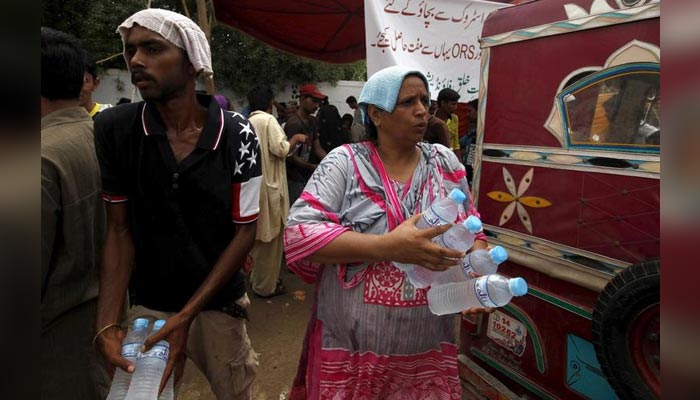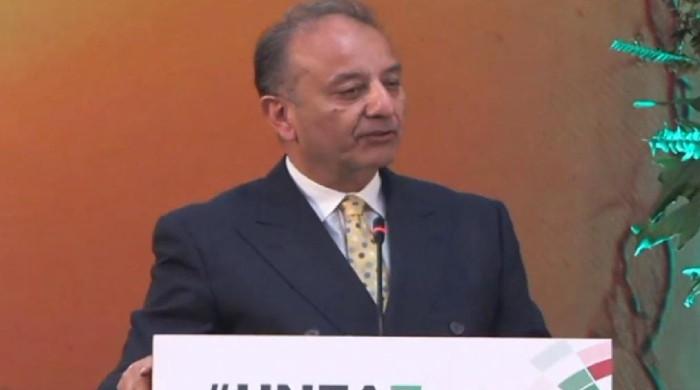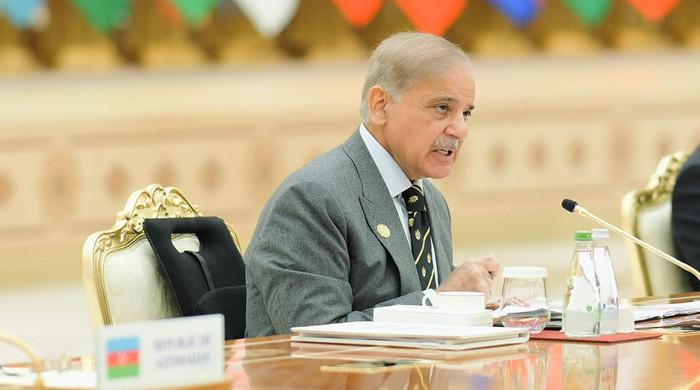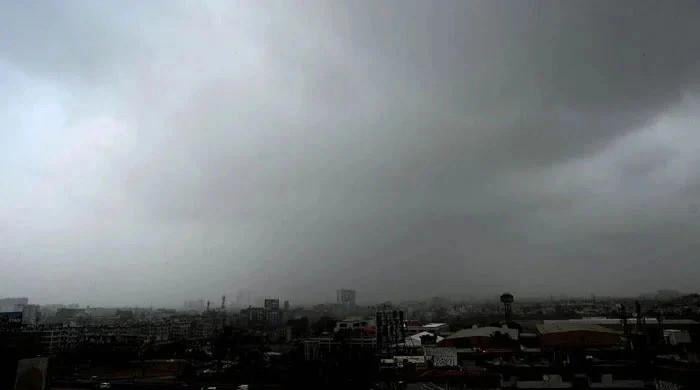'Heatwave like conditions' likely to persist in most parts of country next week: PMD
Most parts of country can expect a slight relief from May 14 (evening/night) to May 17, says PMD
May 14, 2022

- Heatwave like condition likely to persist in most parts of country.
- Most parts of country can expect a slight relief from May 14 (evening/night) to May 17.
- Day temperatures are likely to increase again from May 18.
The Pakistan Meteorological Department (PMD) on Saturday forecast that a "heatwave like condition" is likely to persist in most parts of the country during the next week.
According to the met department, most parts of the country can expect a slight relief from the ongoing heat wave from May 14 (evening/night) till May 17 due to dust storms, gusty winds and thunderstorms in the afternoon and evening/night. However, the day temperatures are likely to increase again from May 18.
The PMD warned that the prevailing hot weather in the country may "cause water stress on water (reservoirs), crops, vegetable and orchards" and it might increase water and energy demand.
The met department also warned that the hot temperatures are more likely to harm senior citizens and children and could cause heatstroke.
Warning the citizens of the impacts of the hot weather on their health, the department advised the public to avoid "unnecessary exposure to direct sunlight and take precautionary measures." The public is also advised to use water judiciously, it said.
NIH issues heat/sunstroke management advisory
Amid severe weather conditions, the National Institute of Health has issued an advisory to prevent and manage heatstroke.
The common symptoms of heatstroke are hot and dry skin or profuse sweating with hot, red or flushed skin, weakness/lethargy, throbbing headache, elevated body temperature, irritability, dizziness, decrease urine output, heat rash (red cluster of pimples or small blisters).
Following steps are recommended to be followed for the victims of heatstroke.
- The most important step is to lower the patient's temperature by moving him/her to a shady area. After that, it is necessary to remove the unnecessary clothing and apply cool tepid water to the patient's skin while soaking the remaining clothes with water.
- Notify the emergency services immediately as severe cases often require hospitalisation and Intravenous re-hydration.
- Promote sweat evaporation by placing the patient before fan and ice packs under the armpits and groin.
- Encourage frequent oral fluid intake in conscious patients.
- Hospitalise and maintain intravenous fluids if required.
- Monitor body temperature with a thermometer and continue cooling efforts until the body temperature drops to 101℉. Anti-pyretic may be given once the body temperature drops to 101 O F or below.
The NIH also issued preventive measures to be taken.
- People should be advised to keep themselves hydrated and limit time in direct sunlight in hot humid weather or in places with high environmental temperatures.
- Enhance the generalised awareness about early signs/ symptoms of dehydration and subsequent evolving signs and symptoms of heatstroke such as muscle cramps, nausea, vomiting, light-headedness and even heart palpitations.
- Suspected persons should avoid the use of caffeine-containing soft drinks and/or tea), which may exacerbate dehydration.
- People should be encouraged to consume foods containing enough salts and minerals (hypertensive patients should consult their consultant in this regard), and wear hats and light-coloured, lightweight and loose clothes during the hot humid environmental conditions.









